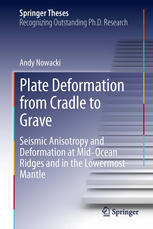

Most ebook files are in PDF format, so you can easily read them using various software such as Foxit Reader or directly on the Google Chrome browser.
Some ebook files are released by publishers in other formats such as .awz, .mobi, .epub, .fb2, etc. You may need to install specific software to read these formats on mobile/PC, such as Calibre.
Please read the tutorial at this link: https://ebookbell.com/faq
We offer FREE conversion to the popular formats you request; however, this may take some time. Therefore, right after payment, please email us, and we will try to provide the service as quickly as possible.
For some exceptional file formats or broken links (if any), please refrain from opening any disputes. Instead, email us first, and we will try to assist within a maximum of 6 hours.
EbookBell Team

5.0
60 reviewsThe Earth's rocky mantle convects to lose heat, which comes from the liquid iron core below. The mantle's interfaces - the core-mantle boundary, and the lithosphere - may hold the key to understanding mantle motion because of the seismic anisotropy present in these parts of the Earth.
In this thesis, Andy Nowacki presents a precise but comprehensive review of the current state of the art in studying flow with anisotropy, mineral physics and geodynamics. New measurements of shear wave anisotropy in the lowermost mantle and at mid-ocean ridges are used to constrain mechanisms of creep and melt extraction in the mantle. A model of global flow is used to predict anisotropy in the deep Earth, and novel methods to forward model shear wave splitting are described. Future studies of mantle flow must incorporate the understanding gained in this thesis.
The thesis contains a substantive introduction to the structure of the Earth, seismic anisotropy in general and in the core-mantle boundary region, and mid-ocean ridge processes. It also describes novel methods for forward modelling and interpreting shear wave splitting data. Three chapters present timely research into dynamics at divergent plate boundaries and at the core-mantle boundary.